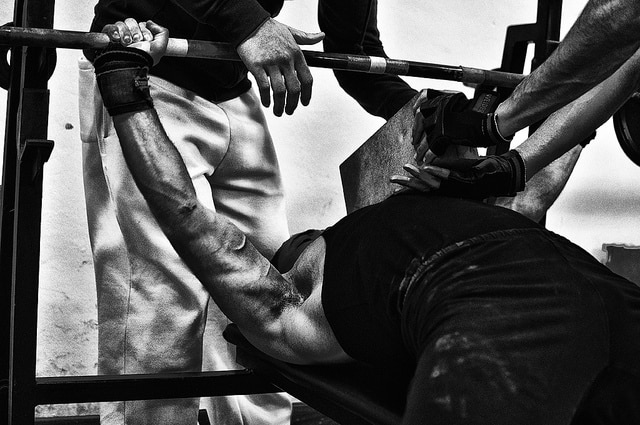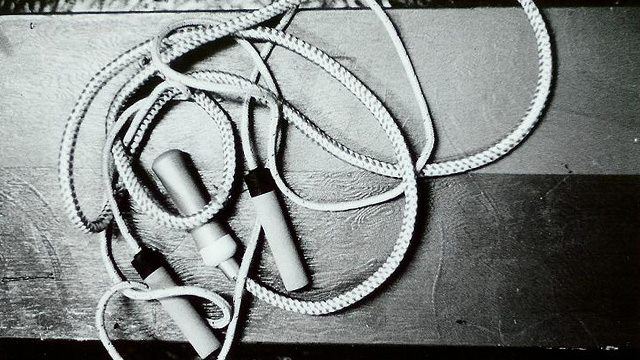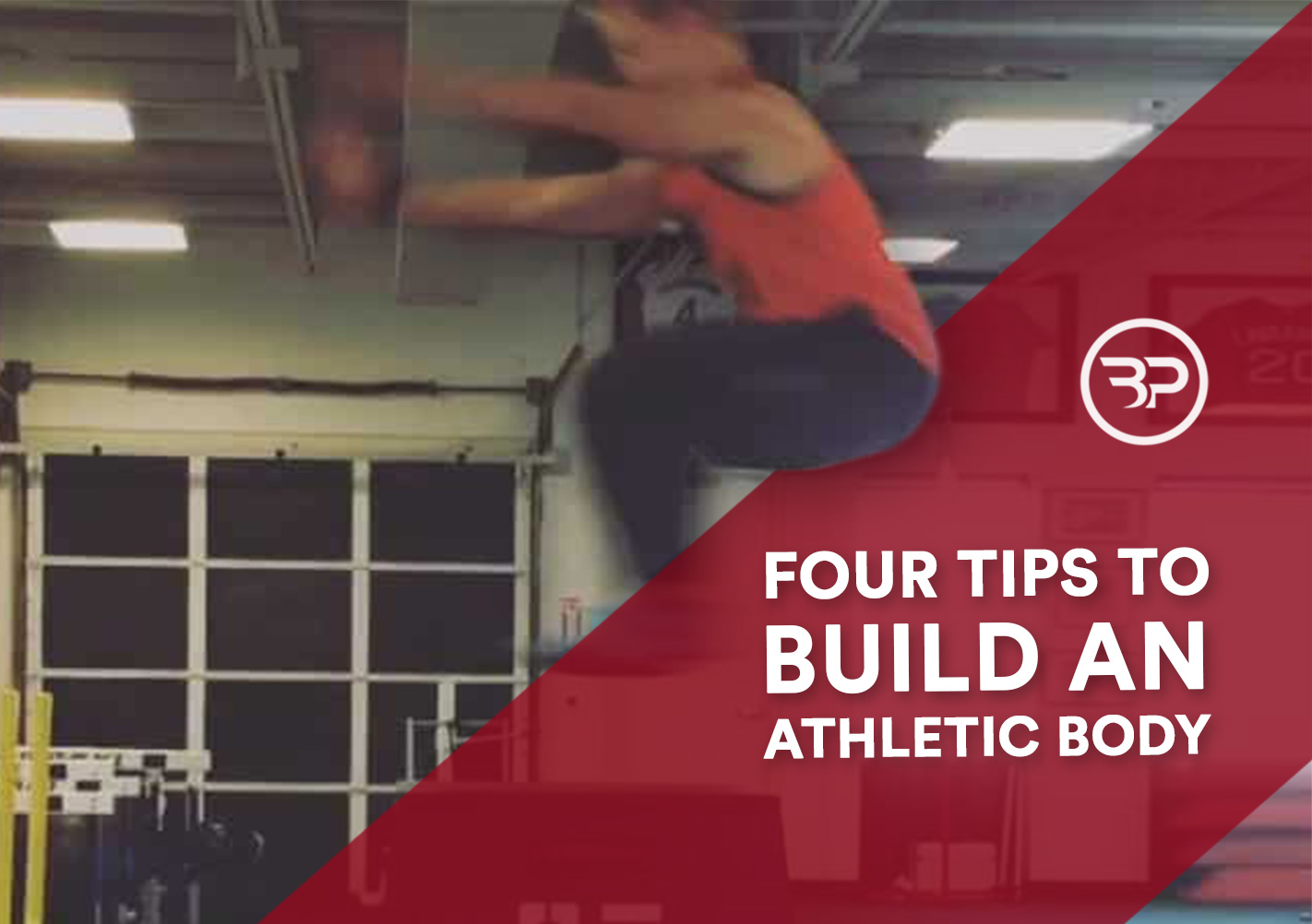Four Tips to Build an Athletic Body
February 12, 2016
[A variation of this article was published as a guest post on NickTumminello.com]
Building an athletic body isn’t just for competitive athletes. It’s for everyone. Or it should be.
Why not be able to run, throw, jump, cut, and play a recreational sport at the drop of a hat? Unfortunately, this isn’t as common as it should be.
Much more common is this:
* 29-year-old Bryce pops his hamstring playing beer-league softball.
* Or 31 year-old Laurie sprains an ankle chasing her daughter.
Let’s soar up to 30,000 feet for a moment to consider the big issue:
If your training isn’t improving your quality of life, or improving your ability to play a sport you enjoy, what exactly are you accomplishing?
This article explains how to apply principles I’ve learned working with both athletes and general population clients. I’ll explain how tweaking your training can power up your performance — and minimize your chance of injury.
We can all use a performance upgrade, whether it’s a competitive playing field, or kickin’ it with your buddies every Thursday night with beer league softball.These principles, when applied as directed, will help you build an athletic body.
Maximum Strength with the Big Three is Overrated:
What’s the top tip most coaches preach as it pertains to building an athletic body?
If you said getting stronger, you’re correct.

While strength is important to build a foundation for the development of speed and power, it’s overvalued if you endlessly chase strength PR’s to the determinant of improving your ability to use it, relative strength, and movement.
Before you punch your computer screen and call me an idiot, hear me out. I’m not saying Maximum Strength isn’t important to build an athletic body.
It is.
It’s vital.
But, there are more ways to build strength than the powerlifting movements. There’s no magical touch associated with a heavy loaded barbell.
Your body understands stress, and that it needs to generate force and recruit motor units to overcome an external stressor, not that there’s a loaded barbell.
What’s more important is the muscles recruited, amount of force needed to overcome the resistance, and integrating movement that matches the demands of sport. This can be through a unilateral exercise, a barbell, kettlebell, weighted sled, or your own bodyweight.
It’s not the tool that’s important. It’s that your body is working in a specific movement pattern, recruiting the correct muscles, and generating force when you need it.
Furthermore, for non-competitive lifters, there are diminishing returns with endlessly chasing strength PR’s as it pertains to becoming more athletic.

Example: a 200-pound man has the goal of running faster and jumping higher. Currently, he’s well trained and has a back squat max 375 lbs.
Would he be better off using a specialized program to get your squat to 405, or adding lighter, more explosive exercises to maximize his ability to rapidly generate already-present strength?
If you picked more explosive exercises, good for you!
Your body specifically adapts to the imposed demands.
Maximizing the carryover to your sport requires you train movements and patterns that are specific to the demands of your sport, such as explosive jumping and sprinting.
Instead of just lifting heavy, focus on maintaining your strength base. Improve your relative strength and power in the movements you need for performance.
Power — the ability to generate strength rapidly — is vector specific. Huh? That means to optimally develop power for a given activity, you must train it in the direction, with joint angles, and recruitment patterns most similar to your activity.
At the end of the day, strength is vital. Tere’s no denying that. But it’s time to move past the “ bro, just get really strong” argument. You need to move and generate power in the directions you need. Otherwise, you’ll limit your performance.
Jump and Throw
Building an athletic body requires your muscles to work together. That means increasing the ability of your body (muscles, joints, ligaments, and nervous system) to function as a complete unit.
Jumps and throws take major movement patterns, such as the squat or press, and change the typical demands from a pure-strength exercise to an explosive speed or speed-strength exercise.
Working with lighter loads and focusing on explosive movement more directly correlates to the demands of most sports. You’ll improve your ability to move and generate force in the movement patterns needed for performance.
Adding jumps or throws to your training can increase neuromuscular capabilities. You’ll transfer your strength into usable athleticism and power. The result? Better performance.
Throws, Jumps, and Upper Body Plyometrics:
To maximize carryover from training to your activity of choice, include jumps and throws that most similarly match the demands of your sport or workout. These exercises are best performed after a dynamic warm-up and before lifting.
Try 3-4 sets of 3-6 reps with 90-120 seconds of rest between sets. Below, I’ve listed my top three favorite variations, with a few other suggestions listed underneath.
Overhead slam: Explosive shoulder extension while preventing spinal flexion.
Sports Action: Think volleyball spike, a swimming stroke, or swinging an ax for the lumbar jacks in the audience.
This works the explosive shoulder extension, forcing the lats, triceps, posterior delts, and pecs to rapidly generate force. It also forces your core to work double time, transferring force from overhead towards the ground while preventing your spine from flexing forward.
How to do it: Use a non-bouncy medicine ball (8-12 lbs.) and hold it overhead.
Brace the abs like you would before someone pokes you in the stomach. Now, with the weight overhead and abs braced, throw the ball to the ground while keeping eyes straightforward and minimal trunk flexion.
Your goal is to throw as hard as possible without bending through the waist or rounding in your shoulders.
Inline Plyo-Push-Up: Emphasize horizontal pressing power
Sports Action: Pushing an opponent away from you.
Compared to a clap push-up, elevating the hands on a bench allows larger individuals to generate maximum force with less compressive stress on the joints while maintaining a neutral spine position (non-saggy push-up position).
How to do it: On a bench, assume a push-up position with the hands aligned with the shoulders, legs fully extended, abs braced, and back straight. Don’t allow the hips to dip.
Lower yourself rapidly to the bench and then explosively push your body away. The energy should make you rock back to mid-foot or heel if your relative strength is high.
As gravity carries you back to the starting position, slightly bend the elbows at impact to reduce stress and “stick” the landing with minimal movement through your torso. Re-set and repeat.
Dumbbell Squat jump: Explosive triple extension, a speed-strength variation of a vertical jump.
Sport action: Explosive triple extension, jumping in basketball, vertical propulsion.
Squat jumps mimic the squat and a vertical jump, bridging the gap between jumping in sport and squatting in the gym.
How to do it: There are three phases: loading, exploding, and landing.
Loading: Set up with feet about shoulder-width apart in an athletic stance with arms up at chest height. The loading phase utilizes a simultaneous downward arm swing with flexing at the hips and knees, thus loading up the legs.
Exploding: Rapidly swing the arms up while driving your feet into the ground and extending the hips and knees, and then taking off on the balls of the feet. Fully extend the arms overhead and aim to fully extend the body with the ankle, knee, hip, trunk, shoulder, and ear all being aligned.
Landing: Bend your knees and drop the hips into a squat position, absorbing force evenly though the foot. Keep your chest and head up, looking straight ahead. Hold a vertical shin position to minimize excessive shear stress and valgus/varus positions of the knee.
Analyze: What’s the Risk/Reward Trade-Off?
Everyone come from various backgrounds that create bias towards different training disciplines. It could be powerlifting, strongman, bodybuilding, Olympic lifting (my bias), or something else.
With so many different opinions and experts on training, how can you select the exercises that are best for you?
Instead of thinking of any exercise as the next best thing, step back and consider each exercise a tool to get the job done.
The tool that is best both matches the movement patterns needed for your sport, and minimizes the risk of injury.
For example, we can all agree that the squat is a phenomenal exercise for developing strength and power.
But how important is sub-parallel squat depth?
In the case of a competitive weight lifting, going to extreme depths, even with butt wink and (loss of lumber stability) is a demand of the sport. In this case, an ass to grass squatting is warranted, as it’s directly required in competition.
But, what about Bryce, who popped his hamstring playing softball? He’s an average dude at the gym, just wanting to look better for summer and crush a few homers.
In this case, Bryce loses lumbar stability below parallel in his squat. The risk of low-back injury (either acute or chronic) with an ass-to-grass squat outweighs the potential benefits of building athletic muscle.
This isn’t to say that squats are a bad exercise for him, but in the context of depth, he’s better off working within a stable range of motion.
Each exercise is a tool, rather than an end-all be all to performance. Pick the tools and techniques with that complete the job while minimizing risk, and maximizing rewards.
Exercise Order Based on Neural Demands
When it comes to performance, the nervous system is the Captain.
To maximize performance and reduce injury risk, the most neurologically demanding exercises must be performed early in the workout, when the body is fresh.
Most sports require explosive sprints, jumps, cuts, swings and throws to drive performance. If you’re performing exercises to improve, like cleans for a vertical jump, yet already ran 3×400 meter sprints and did heavy squats, your nervous system is probably too torched for super high power outputs, meaning the nervous system won’t send signals fast enough to allow sound technique and performance.
As a result, you’re setting yourself up for sub-par training and performance at best, and injury at worst.
If your exercise selection doesn’t jive with your goals and allow you to generate force, while also increasing injury risk, then you have a big problem.
Keep intense movements like sprints, jumps, and heavy lifts early in your workout. Then move onto higher rep, less neurally demanding exercises later on.
Four Ways to Build an Athletic Body
- Put the most explosive exercises first in your training
- Stop obsessing over max weight
- Jump, throw, push, and run
- Look at your training from a risk/reward perspective
Once you have a foundation of strength and basic movement, it’s time to focus specifically on your goals.









[…] 4 Tips to build an Athletic Body via Eric Bach […]